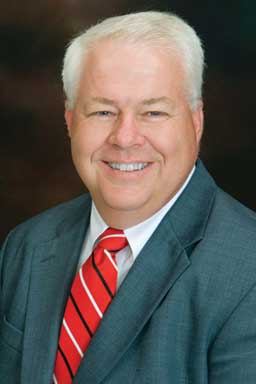I am writing this message Easter weekend and spring weather is all around. Spring always brings a time of renewal and hope. Crops are planted and preparations made for a summer garden. It is a beautiful time of year and seems to get shorter every year. This message will reach you after World Pork Expo and the heat and humidity will be in full force by then. Our industry is facing uncertainty as feed costs and availability of feedstuffs have eaten into potential profits from a good market price.
This time of year is also the time for state and federal budget negotiations. The economic downturn has caused many budgetary problems for universities and their programs. Budget cuts have become necessary and are impacting faculty positions and research and extension programs. The dean of the College of Agriculture and Life Sciences at NC State University in an electronic newsletter recently made a good case for the return on investment in public sector agricultural research. His main citation was a report from a task force from the Council for Agricultural Science and Technology (CAST). The report, titled Investing in a Better Future through Public Agricultural Research,1 outlines the benefits of agricultural research to the public. The authors of this report estimate that every dollar spent on public agricultural research and extension returns $32.00 to society, with most benefits derived from increased productivity.
We have seen an increase in private sector investment in agricultural research as well. This is from industrial companies, production companies, and other such entities. Dr Mike Tokach, in his presentation2 at the 2010 Leman Swine Conference, “Where has all the research gone?” made the point that private sector research investment has replaced some of the public funds that have become unavailable. He cautioned that these entities need to still publish peer-reviewed information and that confidentiality issues should not lead to “selective” publishing. The development of private-public relationships could help with some of these issues, and examples cited in his paper show that this has been very successful. The private sector is efficient at developing basic science into useful technology, but less often pursues basic science research without clear marketability. A robust public university research infrastructure supports the private sector with basic science knowledge.
Both of the above sources point out that the major problem with having fewer university-based research programs is the lack of graduate students being trained and obtaining degrees to do research in the future. The CAST Task Force warned that a decrease in funding in the short term could leave gaps in the pipeline of teachers and researchers that could affect our ability to keep pace with population growth and food needs in the next 20 to 30 years.
Dr Locke Karriker in his recent Howard Dunne Lecture3 challenged us as a profession and an industry to become evidence based in our approach to research study design and in how we apply this to everyday practice. There are deficiencies in the current information that is available to the swine practitioner from an evidence-based standpoint. A review of action items that were put forth in his presentation:
• Improve our culture: Improve our evidence-based culture by holding our peers in academia and proprietary research accountable for transparent reporting of evidence behind their recommendations.
• Understand the characteristics of quality studies: Educate yourself on trial design and implementation.
• Develop applied competency in statistical analysis: Learn about appropriate statistical tests and how they are used.
• Invest necessary resources in field-based trials: Learn to design field trials that answer the proper questions.
• Strategically develop access and critical appraisal resources in your organization: Learn how to access information.
• Get involved, form strategic alliances: Become involved in organized evidence-based medicine.
To summarize, there is a need to lobby for continued investment in public university-based research and training of graduate students. We should encourage positive relationships between private and public research organizations. These could be the source of applied research for the industry. Become more science based in your thinking as a practitioner and implement as many of the action items put forth by Dr Karriker as possible. The sustainability of the swine industry and our profession is through increased productivity brought about by sound evidence-based research and adoption and implementation of that knowledge by producers.
References
1. Huffman W, Norton G, Tweeten LG. Investing in a Better Future through Public Agricultural Research. CAST Commentary. March 2011. Available at: http://www.cast-science.org/publications.asp. Accessed 2 May 2011.
2. Tokach MD, Dritz SS, Goodband RD, De-rouchey JM, Nelsson JL. Where has all the research gone? Proc Allen D Leman Swine Conf. 2010;27–33.
3. Karriker LA. Evidence-based practices: Myths and applications. Howard Dunne Memorial Lecture. Proc AASV. Phoenix, Arizona. 2011:11–22.
-- Randy Jones, DVM

